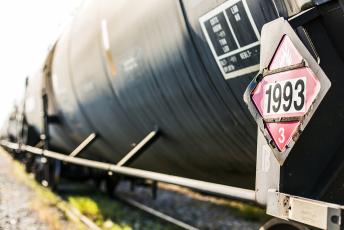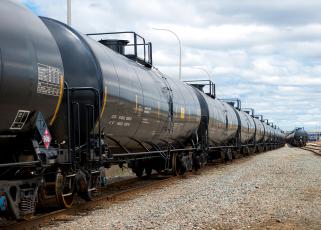Some of the most innovative technological developments in pipeline safety and system integrity are predicated on the age-old concept of sharing stories.
In 2015, after years of building a collection of over 600 pipeline real-world “test specimens” to be used for advanced pipeline safety research, the Pipeline Research Council International (PRCI) opened the Technology Development Center (TDC) in Houston, Texas, a state-of-the-art pipeline technology research facility dedicated to “improving current inspection and integrity assessment technologies and promoting the development of new technologies for pipeline integrity management.”
The TDC was specifically designed for members of the industry to assess the performance of technologies, processes, and personnel and to strive for the cleanest, safest, and most efficient pipeline systems. This enables the industry to share the lessons they have learned in pursuit of pipeline safety and for companies to learn from the collective experiences of their peers.
We recently caught up with Michael Stackhouse, a leader of asset integrity for Phillips 66 who sits on the Executive Board for PRCI and is the current Chairman of the TDC Advisory Committee, to learn more about how the industry is improving pipeline safety and system integrity by sharing information and experiences across the industry.
Mike, you have been in the pipeline integrity field since you started your career in 1985. What changes have you seen in the way the industry addresses pipeline safety over your 36-year career?
Mike Stackhouse: The challenges the industry faces haven’t changed appreciably. But the way we react to them certainly has.
Corrosion and third-party damage are still the largest threats common to all operators. And we all manage pipeline fatigue and the microscopic cracking in some of the systems that can grow over time if not properly addressed.
There have been some changes in the environment over the years that we’ve had to adjust to. For example, typically farming didn’t bother our pipelines, but as time went on, cutting discs got deeper and larger. So as farming techniques change, we have to be aware of those types of changes and adjust accordingly. Take pipeline coatings. The industry has some pipelines from the early 1900s that had hand-applied coal tar that is still perfectly coated today. But as the environment changes – be it a shift in irrigation or exposure to runoff from cattle or pig farms – that can change or effect the coating condition.
The primary thing about coating is to make sure the pipes are well coated when they are built. Any barrier to the environment will not allow corrosion to exist.
Operators deploy In-Line Inspection tools (ILI) and other detection technology to look for corrosion, dents and cracking. And that gets to the heart of pipeline safety technology: inline inspection - the tools we put into the pipeline to record the health of pipeline.
How do you stay ahead of the shifting environment?
MS: Pipeline operators go to great lengths to be in tune with landowners. There are departments within all pipeline operations that do constant public outreach and mailings to landowners to learn about any changes to their land that could affect the pipeline’s right of way (ROW).Operators put up signs and markers along the right-of-way of the pipeline. Any place you’re standing along the right-of-way, you can see pipeline markers that have the operator’s phone number so you can call them. Operators also belong to industry groups like 811 and actively promote calling 811 “before you dig.”
At Phillips 66, we do flyovers over our entire pipeline system a minimum of 26 times a year to make sure there’s no visible signs of changes. Safety and integrity are a perpetual living program that never ends. We are in a constant state of continual improvement when it comes to integrity and safety.
But as to your first question, the sharing of the information as an industry is a huge development and it is a revolution in pipeline safety and system integrity.
Why the focus on sharing information?
MS: Decades ago, we were a pretty quiet industry. As with most industries, we didn’t share information with our competitors. But that changed quickly when it became obvious that pipeline safety is not a competitive advantage amongst our industry. Simply put, your leak is my leak. We recognized that by fully sharing information and lessons learned, everyone would benefit - our companies along with all our other stakeholders.
These days we all share information. I talk to operators a couple of times a week to share practices and learnings. And we get together a lot more through various committee meetings and other industry events. And that’s good for all of us, because when we get together as a team and share learnings, we all become more effective.
For example, we’re currently working on a pilot to share intelligence on risks associated with river crossings. Because they are constantly changing over time, rivers have certain characteristics that can pose a threat to pipelines.
We’re working with an industry river risk expert, Dr. Jeff Barry of GeoMorphic Solutions, and PRCI to share a river’s characteristics that could affect an operator’s assets, and we’re building mechanisms to share that information throughout the industry so even the smaller operators can benefit.
I’ve been at this a long time, and I can tell you that this the first time we’ve gotten together as operators and taken the driver’s seat to develop and improve technology in this way as an industry-- testing technology and sharing learnings together.
How has PRCI influenced this shift toward openness?
MS: The very structure of PRCI is a testament to this new collaborative way of thinking. PRCI is an international association that is funded by pipeline operators and the industry. We all – as an industry – contribute funding to PRCI in order to collectively research and develop technologies to improve safety and system integrity.
Sharing intelligence is literally baked into PRCI’s mission: “To collaboratively deliver relevant and innovative applied research to continually improve the global energy pipeline systems.” In 2020 alone, PRCI teams created 74 new technical papers from completed research projects and held 29 webinar sharing’s to transfer the learnings from the research to industry.
The most recent reauthorization of the Pipeline Safety Agency (PHMSA) – the PIPES Act of 2020 – includes a pilot program that allows the industry to test safety technology in the real world before incorporating these new technologies into the regulations full-time. Can you give us an example of how the industry would use PRCI and the TDC to test a new technology or solve a particular pipeline issue?
MS: Phillips 66 recently took sections of pipe that had various defects out of the ground. We sent them to the TDC in Houston and joined them together to make about a 300-foot test section. Then we invited inline inspection companies to test their tools on these assets. Prior to their tests, we used non-destructive evaluation methods to precisely measure the defects that were in the pipes and then shared that information with them so they could better evaluate their tools.
Eight different inline inspections companies tested their tools in that valuable industry testing asset at the TDC. And each one of them learned quite a bit on how to enhance algorithms to improve the scientific methods they use to give us information about the overall health of the pipelines.
The TDC is open for use by members of PRCI and nonmembers.
A 300-foot pipeline test section? That sounds like quite an operation.
MS: The TDC has a very large footprint, about eight acres. They’ve got a state-of-the-art pull-test facility, where they use winches to pull the pigs through the pipes. There’s a 20,000 square foot research workshop and test facility, as well as a 9,000 square foot office and meeting space. And we’re building an aboveground storage tank to test the technology we employ from a tank perspective.
But the Technology Development Center is more than just the physical assets; it’s a manifestation of the collective decision of the industry to work together and share information, experiences, expertise and learnings from the data to address integrity issues before they occur.
Sharing information is a big thing but sharing the learnings is where the value is.
In the past we thought we needed a big warehouse of data in order to learn. But we’ve been looking at the problem wrong. It’s not the data we need. What we need is a mechanism to share learnings from the data. At TDC, we do the critical assessments of the data and evaluate trends to assess what we as an industry need to do to improve system integrity.


